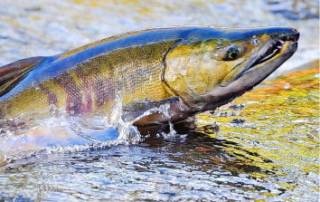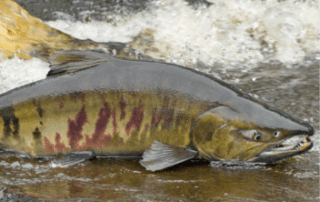Chum salmon, scientifically known as Oncorhynchus keta, represents a vital and fascinating component of Alaska’s diverse salmon population. Commonly called "dog salmon" due to their canine-like teeth and facial features, chum salmon are native to the North Pacific Ocean from the Arctic Ocean to the Sacramento River in California. While they are distributed widely, their presence is particularly significant in Alaskan waters, contributing to the state’s rich tapestry of fisheries.
Pink salmon are known for their distinct life cycle, which includes spawning in freshwater rivers and streams. These fish typically have a two-year life span, with odd and even-year populations. The odd-year fish spawn in odd-numbered years, and the even-year fish spawn in even-numbered years. Spawning usually occurs in the summer, from June to September, depending on the specific location. During this time, female pink salmon create nests, called redds, by using their tails to dig depressions in the gravel substrate. After depositing their eggs, the females cover them with gravel, and both male and female pink salmon die shortly after spawning. The eggs hatch in late winter or early spring, and the young salmon, known as fry, then go to the ocean to begin their marine phase.
Chum salmon are renowned for their unique life cycle and distinct physical characteristics. Their life span typically ranges from three to five years, with different populations exhibiting varying patterns of return to spawn. Unlike other Pacific salmon species, chum salmon can spawn in saltwater and freshwater environments. The spawning season for chum salmon typically occurs from late summer to early fall, with specific timing varying based on geographical location and local environmental conditions. During the spawning season, chum salmon undergo remarkable transformations in coloration, with males developing vibrant shades of red, green, and purple while females display a mottled appearance. This distinctive coloration serves as a mating display and a mechanism for camouflaging against predators. In terms of size, chum salmon are recognized for their robust build, with average weights ranging from 8 to 15 pounds and lengths between 24 to 33 inches. Males in the species are generally larger than females. Chum salmon are critical in Alaska’s fisheries, providing sustenance for wildlife and humans, and are beloved by anglers for their aggressiveness. Chums will often move great distances in the water to take flies and lures, and provide a thrilling and ferocious fight once hooked. They are also an important commercial fishing species, although their importance extends beyond their role as a commercial resource, as they are integral to the diets of various predators, including bears, eagles, and other fish species.
Chum salmon’s remarkable adaptability to diverse aquatic environments enhances their ecological significance. Thriving in a spectrum of habitats, including rivers, streams, lakes, and coastal waters, chum salmon distinguish themselves by their ability to spawn in freshwater and saltwater environments. This unique trait sets them apart from other salmon species and contributes to their distinctive ecological role. In rivers and streams, chum salmon actively participate in the ecosystem’s balance by constructing nests, known as redds, using their tails to create depressions in the gravel substrate for the deposition of eggs. Following the spawning process, their carcasses become a valuable source of nutrients, fostering the growth of aquatic vegetation and bolstering the overall health of the surrounding environment. Whether navigating the powerful currents of Alaskan rivers, foraging in the nutrient-rich coastal waters, or adapting to the challenges posed by various habitats, chum salmon exhibit remarkable resilience and versatility. Their life cycle, characterized by vibrant spawning displays and critical ecological contributions, underscores their role as a cornerstone species in the dynamic ecosystems of Alaska. Serving as stewards of both natural and economic resources, chum salmon play a pivotal role in shaping the region’s ecological balance, representing an integral facet of Alaska’s intricate aquatic tapestry.



